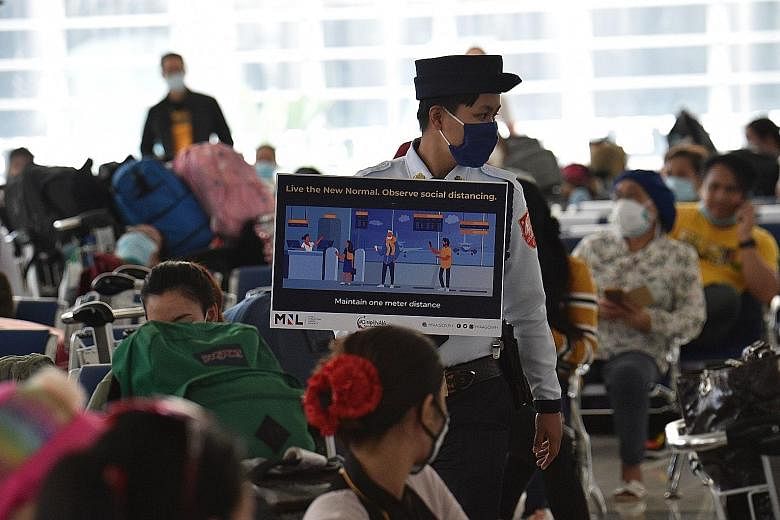President Rodrigo Duterte announced yesterday that he is lifting one of the strictest and longest lockdowns enforced in South-east Asia, as the Philippines pivots to rebuilding an economy devastated by the coronavirus pandemic.
"Let us move to the so-called new normal. Let's see what develops ahead," Mr Duterte said at a meeting of his ministers.
Earlier in the day, health officials had reported the largest number of new cases in a single day since the virus was first detected in the country, and experts warned that easing the lockdown is premature as it has not led to a "discernible" drop in infections.
The Health Ministry said in a bulletin that 539 new infections and 17 more deaths were recorded, bringing total infections to 15,588. Deaths have reached 921.
More than half of the new cases were in Metro Manila.
Mr Duterte reminded the public, however, that "the entire nation is still under quarantine", and some curbs would remain to prevent a second wave of infections.
A task force overseeing efforts to slow the spread of the virus has recommended that Mr Duterte downgrade sweeping restrictions in place across Metro Manila since March 16 to a "general community quarantine" starting on June 1, Interior Secretary Eduardo Ano said.
"But high-risk districts that we consider as 'critical zones' will remain under total lockdown," he said.
Districts inside Metro Manila that continue to report two or more cases per week will remain under strict shelter-at-home restrictions, he said.
Curbs everywhere else in Metro Manila and in the rest of the Philippines will be eased.
Metro Manila has been effectively shut off from the rest of the Philippines and the world since March 16.
Starting on June 1, those living in Metro Manila may leave their homes without a "quarantine pass" to buy essential goods and services.
More companies will be allowed to reopen.
Malls will be allowed to reopen more stores. But restaurants are still limited to takeaways and deliveries, and salons, spas, cinemas, bars and clubs will remain closed.
Commuters may again board buses, trains, taxis and motorised rickshaws, and travel to places outside Metro Manila.
But checkpoints will still be in place to make sure only those going to work or on supply runs and buying essential items will be out on the road.
Essential travel to places outside Metro Manila will be allowed, although airports will remain closed to both domestic and international flights.
The goal with the transition is to revive an economy that has been on standstill because of the lockdown, said Mr Ano.
A city mayor in Metro Manila said the pandemic has had a "devastating effect", especially on workers.
Some five million Filipinos are likely to lose their jobs by year end, and a crippling recession may linger till next year, labour officials and economists have warned.

